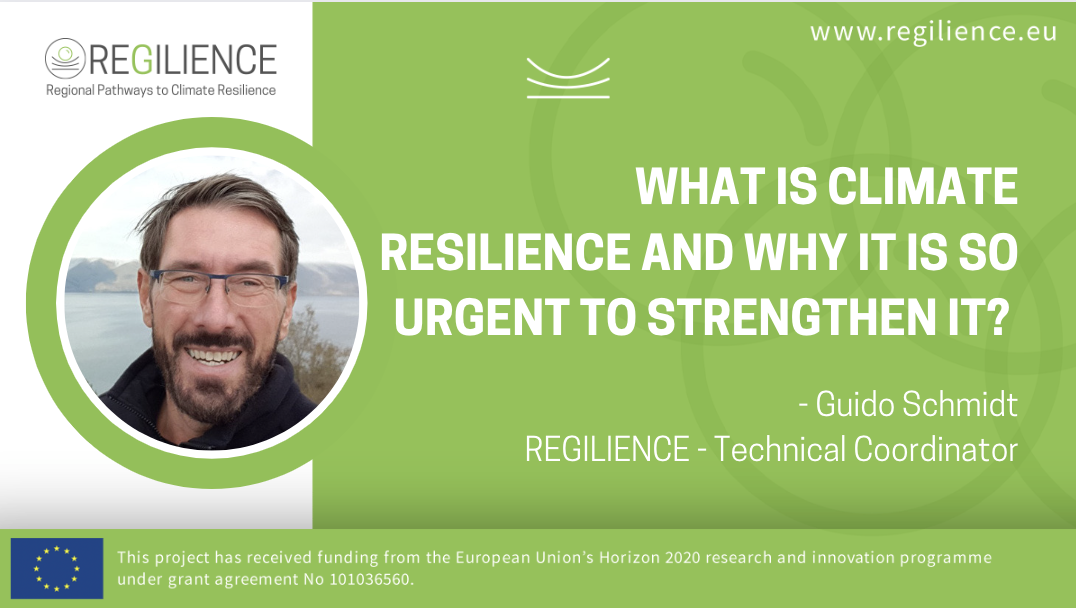
Even if humans are able to halt the emission of greenhouse gases, our planet will continue heating up over the next decades. The last Intergovernmental Panel on Climate Change’s alerts about even higher temperatures, rising seas, fiercer storms, more unpredictable rainfall, and more acidic oceans than what we have experienced in the past years. The world’s ecosystems and biodiversity, our food, energy, and health systems amongst others will change, and if we don’t want to go extinct, we have to adapt to those changes which we cannot yet stop. This is called “climate resilience”.
Where is climate resilience happening?
Some countries, cities and organisations have invested early in climate-resilient development, mitigating already now the impacts of climate change. For example, the Netherlands adopted in 2007 a “Room for the River” strategy, founded on the principles of water safety and spatial quality. The idea is to live with water instead of fighting it: the strategy gives water more space to spread out when floods occur, reducing damage and loss of life. The country moved dikes inland, widened rivers, raised bridges, dug flood channels, and added river catchment areas.
New parks, public infrastructure, and recreational spaces were also created. Now the Rhine River can safely carry 1,000 cubic meters of water per second more than it could before.
Some cities are also frontrunners in climate resilience building. Rotterdam is turning open spaces into multifunctional infrastructure for stormwater management, as in the Water Plaza Benthemplein. Residents and visitors can enjoy the square on dry days, and the square helps protect the neighbourhood from flooding during days of heavy rain.
Milan is increasingly focusing on urban heat. To build resilience, the city is engaging communities through the provision of tailored information on cool routes, cool spaces and locations where drinking water fountains can be found (see EXTREMA). While this is a soft communication measure, it shows how serious the City of Milan is in providing high-quality infrastructure that mitigates climate risk.
The city of Hamburg has adopted its Green Roof Strategy in 2014 with the first Green Roof Symposium. Its goal is to green at least 70 per cent of both new buildings and suitable flat or gently pitched roofs undergoing renovation. The Ministry for Environment, Climate, Energy, and Agriculture supports the project with three million euros in total until the end of 2024. The strategy is based on four pillars: promotion, dialogue, policy and research.
Green roofs and facades have different positive ecosystem services and support several Sustainable Development Goals. They improve environmental conditions by decreasing noise, reducing fine dust particle concentration, lowering surface temperatures, offering retention and evaporation, limiting drainage system congestion and minimising risk of flooding.
Last but not least, the Portuguese ReDuna project aims to restore the natural capacity of the city of Almada sand dune-beach ecosystem to respond to sea-level rise and storms.
Why shall regions take more action?
While there is plenty that cities can do, regional governments – including provinces, districts and departments – have to take much more action to fund and ensure resilience beyond the urban boundaries.
Regional governments hold the political and economic power to decide, plan and even implement how land is managed (e.g., agriculture and forestry, transport infrastructure decisions and water management). In particular, regions shall protect the most vulnerable people from suffering the effects of climate change.
To promote new regional climate adaptation knowledge, strategies and showcases, the European Commission has launched the EU Mission “Adaptation to Climate Change”. This Mission is supported by four projects – REGILIENCE, ARSINOE, IMPETUS and TransformAr – which develop such innovative action in more than 20 regions across the EU.
If you want to make your region more climate-resilient, contact us or subscribe to our newsletter.
You can download the full article here.